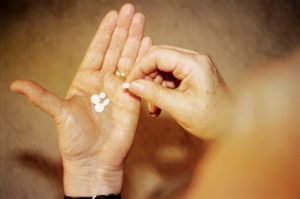 There is a growing problem in the U.S. of individuals addicted to heroin and painkillers, but a new study suggests that anti-addiction drugs may help combat this issue. The drug – naltrexone – is injected monthly and helps block the euphoric sensation of opioid painkillers and heroin, leading to lower relapse rates. During the study, researchers found that even after six months, there was no overdose in the naltrexone group, compared to the other group, which had five.
There is a growing problem in the U.S. of individuals addicted to heroin and painkillers, but a new study suggests that anti-addiction drugs may help combat this issue. The drug – naltrexone – is injected monthly and helps block the euphoric sensation of opioid painkillers and heroin, leading to lower relapse rates. During the study, researchers found that even after six months, there was no overdose in the naltrexone group, compared to the other group, which had five.
In 2014, a record-breaking amount of deaths linked to opioid painkillers was observed – over 28,000. Study author Dr. Joshua Lee said, “We thought this was a good approach to relapse prevention . . . but I was surprised by how clearly effective this medication was. We haven’t had another study like this in the United States. This is potentially a very important study if a [health care] provider wasn’t convinced before that they should offer naltrexone. They may be less skeptical now.”
The extended release version of naltrexone was recently approved by the FDA as a means to treat opioid addiction. Other anti-addiction drugs include methadone and buprenorphine.
Advertisement
At five U.S. sites, doctors administered monthly injections of naltrexone to 153 opioid-addicted adults. Another 155 addicted adults received standard care, which consisted of counseling and community treatment programs.
After the six-month period, 43 percent in the naltrexone group relapsed, compared to 64 percent in the traditional care group. After the treatment ended, it was found during the one-year follow-up that both groups were back on using opioids at similar rates, but the traditional care group experienced two additional overdoses, while the naltrexone group experienced none. The findings suggest that naltrexone should be used longer than six months.
Dr. Terry Horton, chief of addiction medicine at Christiana Care Health System, added, “Addiction is a chronic brain disorder, and the brain changes under the influence of drugs and those changes take a long time to heal. So medications facilitate moving toward recovery, but this requires a long-term effort, as with all chronic diseases.”
“My hope is this will provide another tool in the tool chest to help care for individuals who are in the criminal justice system and moving back into society so they can address their opiate dependence. The models of care we see in the prison population can also be generalized to the greater population. Opiate dependence is, sadly, a disease that’s cutting across all socioeconomic, racial, and gender boundaries. It’s affecting everyone,” Horton added.
Advertisement
Both the FDA and CDC have announced new initiatives to combat the growing problem of heroin and opioid painkiller addiction. The FDA is implementing new labels to warn patients of the dangers of misuse, and the CDC is compiling new guidelines for doctors to utilize when prescribing painkillers.
Lee concluded, “Right now, there’s no debate or argument that going on medications is a better approach. If you’re not using medications, you’re not really practicing effective evidence-based medicine.”
